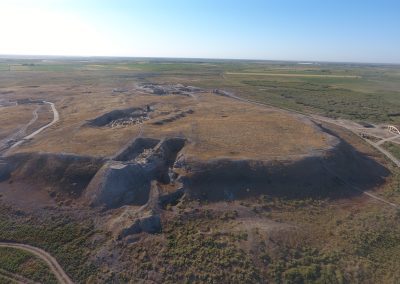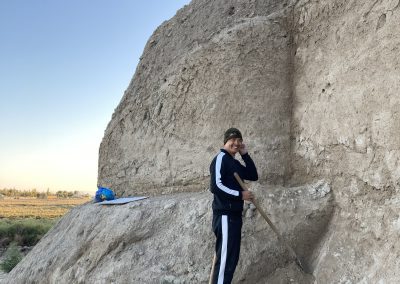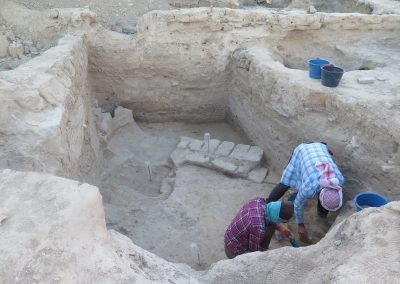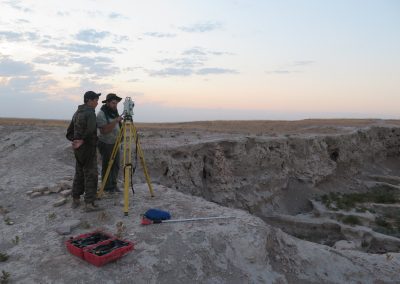Agricultural Sustainability of the Otrar Oasis
Project Summary
The Otrar Oasis in southern Kazakhstan is situated on a fertile plain between the Syr Darya and one of its major tributaries, the river Arys. The city, which is also know as ‘Farab’, was a regional capital from the 8th century AD and occupied until the 18th century. Otrar’s surrounding hinterland contained a complex network of canals which brought water from the Arys. These led towards the city and watered fields for the cultivation of various crops, and so provided both food and water to the numerous urban settlements in the area (Clarke, Sala, and Meseth 2005; Groshev 1985; Toonen et al. 2020). Effective irrigation of this arid landscape was crucial to support the large populations in cities, which profited from their positions on trade routes stretching across Central Asia to China, the Middle East and beyond. Otrar is notable in the historical sources as being the first Khawarazmshah city to face the Mongols during their westward advance in 1219-20 and the location of Timur’s death in 1405. It has been archaeologically investigated by Soviet and international teams since the 1960s. Like many similar medieval cities in the region, the site is now abandoned, and the population density may now be lower than in the 12th century. The ‘Agricultural Sustainability of the Otrar Oasis’ project aims to explore why this is the case.
Environmental degradation or mismanagement is both a likely contributor to urban decline in these space-limited oases, and a salient current issue. Focussing on Otrar, the programme of fieldwork and analysis will focus on urban stratigraphy and charred seeds to date population decline in the city and investigate its agricultural economy. Fieldwork will be complemented by a pilot project of isotopic analysis to determine its feasibility to show shifts in water provision and soil fertility. This data and its archaeological context will be used to assess the contribution of environmental deterioration and human responses to urban decline at Otrar.
Building on recent excavations at the site and in partnership with the Otrar State Archaeological Museum (Akylbek 2013; Campbell 2020, 2021; Campbell et al. 2022), the project involves a programme of targeted geophysical survey, excavation, archaeobotanical analysis and radiocarbon dating. It will partner with the Leverhulme-funded ‘Rivers of the Silk Roads’ project (led by Prof. Mark Macklin, Lincoln) which is investigating how water impacted cities and societies in Central Asia over the past 2000 years. The BIPS flagship grant will provide crucial funding to understand a somewhat overlooked part of the Persianate world, and will transform our understanding of the agricultural economy at Otrar.
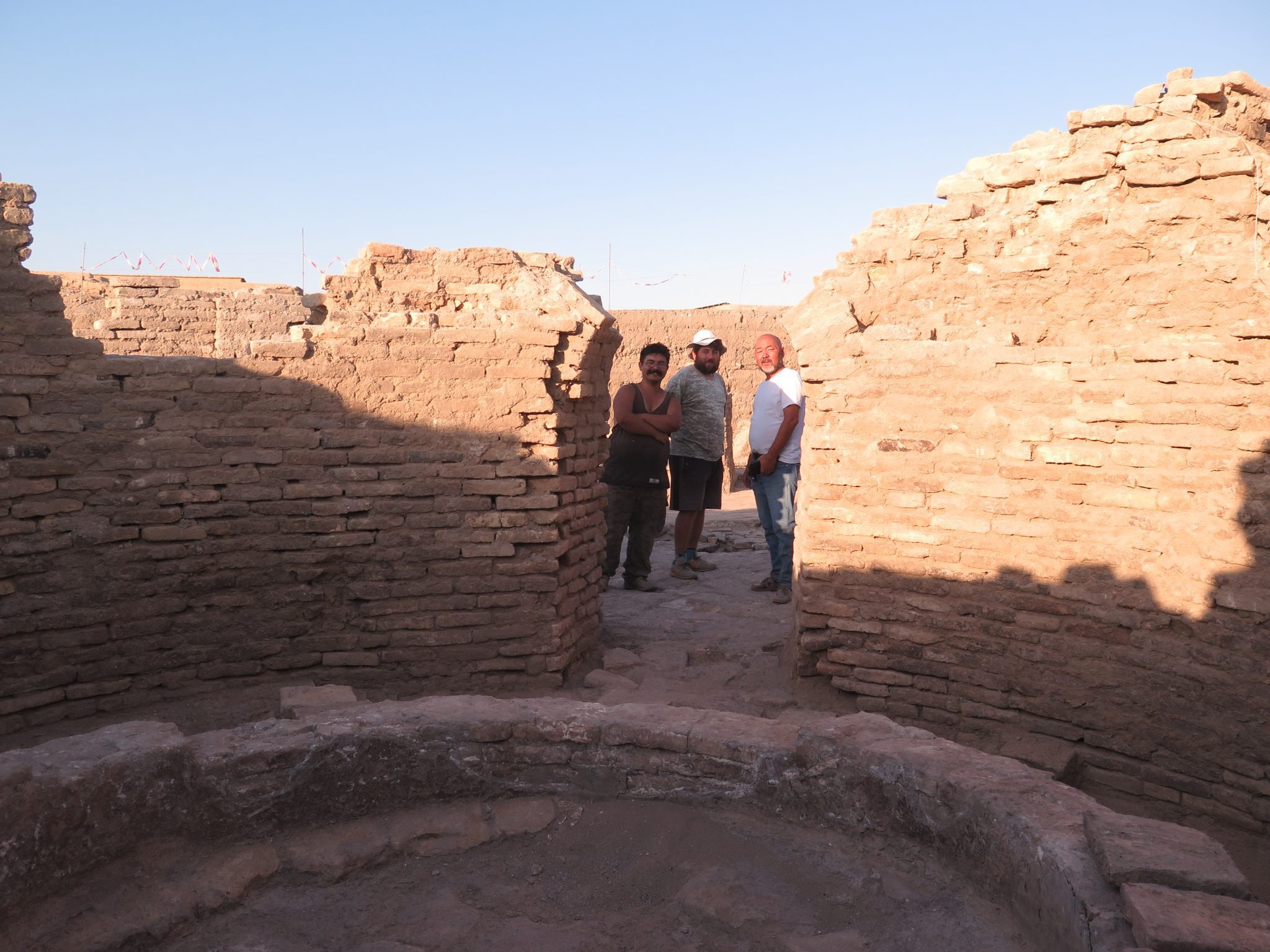
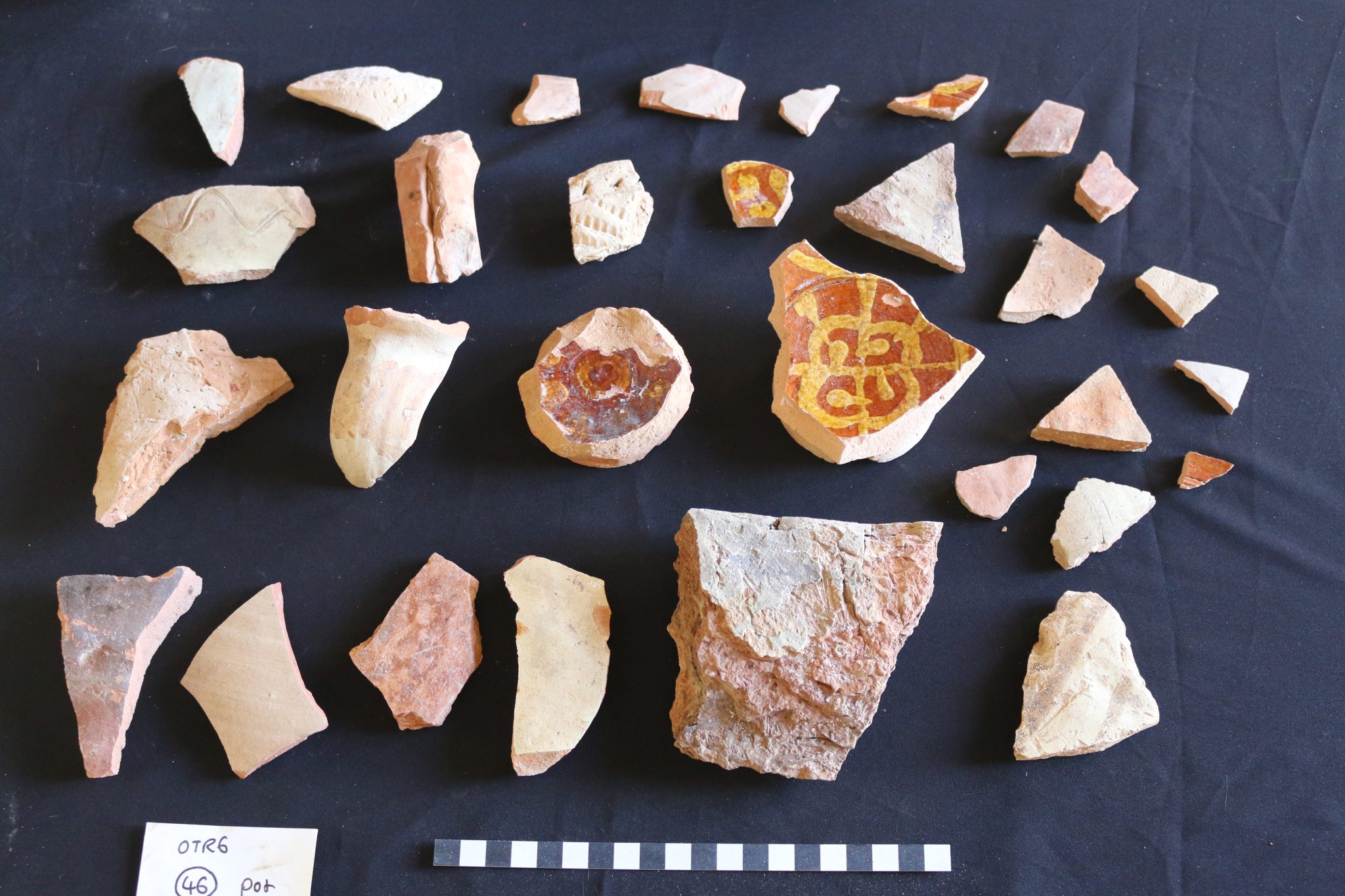
Research Team
Dr Katie Campbell
Project principal investigator.
Katie Campbell is a research fellow on the King’s Silk Roads Programme, King’s College, University of Cambridge and a fellow of the McDonald Institute for Archaeological Research. From 2022-24 she is also working with he Leverhulme- funded ‘Rivers of the Silk Roads’ project based at the University of Lincoln. Her research has focussed on the archaeological remains of large urban sites across Central Asia and the Caucasus, especially using them to understand periods of crisis such as the Mongol conquests of the early 13th century.
Serik Akylbek
Project co-investigator.
Serik Akylbek is the head of archaeology at archeoservice and the Otrar State Archaeological Museum, and a specialist in the archaeology of the Otrar Oasis.
Ali Seraliyev
Project co-investigator.
Ali Seraliyev is a PhD researcher at L.N. Gumilyov Eurasian National University in Astana, specialising on medieval settlement in the Otrar Oasis.
References
Akylbek, S. Sh. 2013. “Otyrar Qamaldary [Otrar Defenses].” Otyrar Mūralary/ Tarikhi-Mădeni, Ghylymi-Tanymdyk Zhyrnal [Otrar Heritage: Culture-Historical and Culture Journal] 2 (3): 13–30.
Campbell, Katie. 2020. “The City of Otrar, Kazakhstan: Using Archaeology to Better Understand the Impact of the Mongol Conquest of Central Asia.” Pp. 597–606 in Proceedings of the 11th International Congress on the Archaeology of the Ancient Near East, edited by L. K. and A. H. Adelheid Otto, Michael Herles, Kai Kaniuth. Wiesbaden: Harrassowitz Verlag.
Campbell, Katie. 2021. “Cities and the Mongol Conquest: Urban Change in Central Asia 1200-1400.” PhD Thesis: University of Oxford.
Campbell, Katie, Ali Seraliyev, Davit Naskidashvili, and Serik Akylbek. 2022. “Urbanism Under Turco-Mongol Rule: Excavations in Otrar, Kazakhstan.” TSU-TI: The International Scientific Jounral of Humanities 1: 9–23.
Clarke, D., R. Sala, and E. Meseth. 2005. “Reconstructing Irrigation at Otrar Oasis, Kazakhstan, AD 800-1700.” Irrigation and Drainage 54 (May): 375–88.
Groshev, V. A. 1985. Irrigatsiia Iuzhnogo Kazakhstana v Srednie Veka [Irrigation in Kazakhstan in the Medieval Period]. Alma-Ata: Nauka Kazakhskoĭ SSR.
Toonen, Willem H. J., Mark G. Macklin, Giles Dawkes, Julie A. Durcan, Max Leman, Yevgeniy Nikolayev, and Alexandr Yegorov. 2020. “A Hydromorphic Reevaluation of the Forgotten River Civilizations of Central Asia.” Proceedings of the National Academy of Sciences of the United States of America. doi: 10.1073/pnas.2009553117.
